Grass lawns are excellent ground covers. They provide a place for your children to play, generate oxygen and prevent weeds from invading your yard. However, grass lawns are not very eco-friendly. They require large amounts of water, fertilizer and herbicide.
In addition, grass lawns are monoculture crops with minimal benefits to nature. In this article, let’s talk about Dutch white clover lawn.
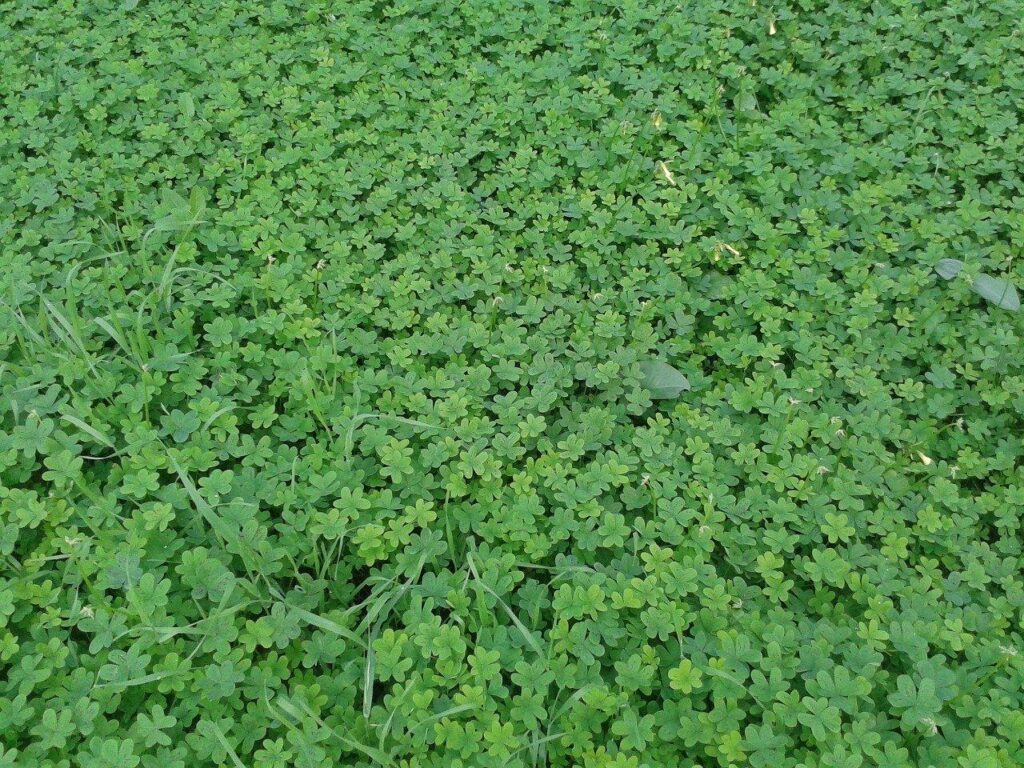
Compared to grass, clover requires less water, fertilizer and herbicide.
That is why more and more people today are looking for grass lawn alternatives. If you are one of those people, you might want to consider a Dutch white clover lawn.
Clover lawns are not new! They used to be very trendy. Nearly every lawn owner grew clovers before synthetic fertilizers and chemical herbicides came to the market.
Establishing a clover lawn is not difficult, and it is quite low-maintenance compared to a grass lawn. Moreover, clovers increase soil fertility, stay green longer, and have less watering needs. However, clover lawns are not for everyone and every soil despite all their benefits. Keep Reading this article to find out more!
Dutch White Clover Overview
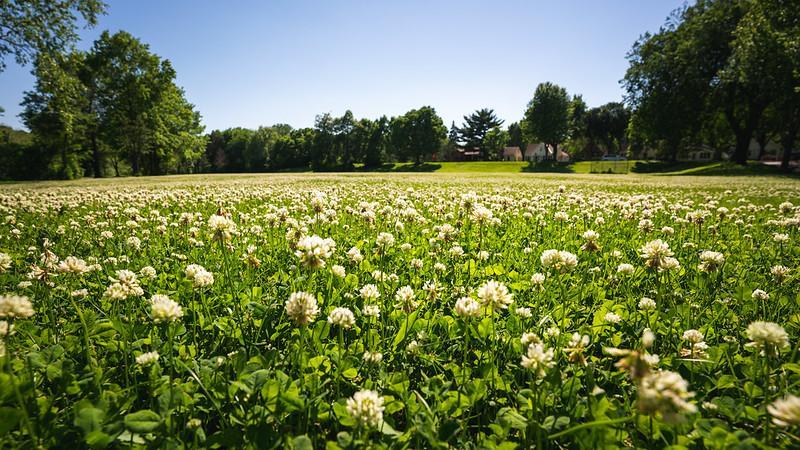
A Dutch white clover park in Minneapolis.
Dutch white clover is a herbaceous perennial that thrives in the cool-season areas of the United States. Like all clover species, Dutch white clover is a leguminous plant, and it belongs to the same plant family as beans and peas.
Dutch white clover is low-growing and has trifoliate leaves. The leaves are long-petioled, smooth and elliptic to egg-shaped. Flower heads are white and develop a tinge of cream or pink color as they age.
Flowers of Dutch white clover are visited mainly by honeybees and bumblebees. Moreover, Dutch white clover is one of the most important forage legumes in temperate regions. It has many culinary and medicinal uses as well.
Dutch White Clover Quick Facts
| Scientific Name | Trifolium repens |
| Other Names | Ladino, Ladino clover |
| Hardiness Zones | 4 to 9 |
| Soil PH | between 6 and 7 |
| Height | 4 to 8 inches |
| Propagation | By seeds and stolons (above-ground stems, runners) |
| Soil Requirements | It does not thrive in sandy soils and prefers moisture-retaining soils |
| Sun Requirements | Partial shade to full sun |
| Maintenance Needs | Low to moderate |
| Lifespan | 2 to 4 years |
| Watering Needs | Low when fully established |
How Do You Plant A Dutch Clover Lawn?
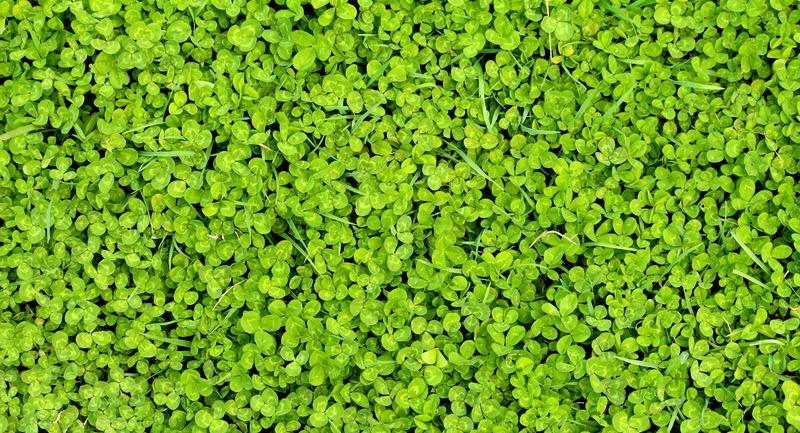
Establishing a clover lawn is easy if you know what to do.
If you plan on establishing a Dutch clover lawn, it is best to plant the seeds in spring or summer. This gives clover plants enough time to grow and mature before the cold season.
Experts also suggest that you should not plant Dutch while clover alone or any single variety of clover as a total lawn replacement.
Instead, Dutch white clover should be mixed with other clover varieties or grasses. That way, even if Dutch white clover fails to grow or does not grow in your yard, another clover variety will. Nonetheless, here is how you can plant a Dutch clover lawn:
Check The Soil PH
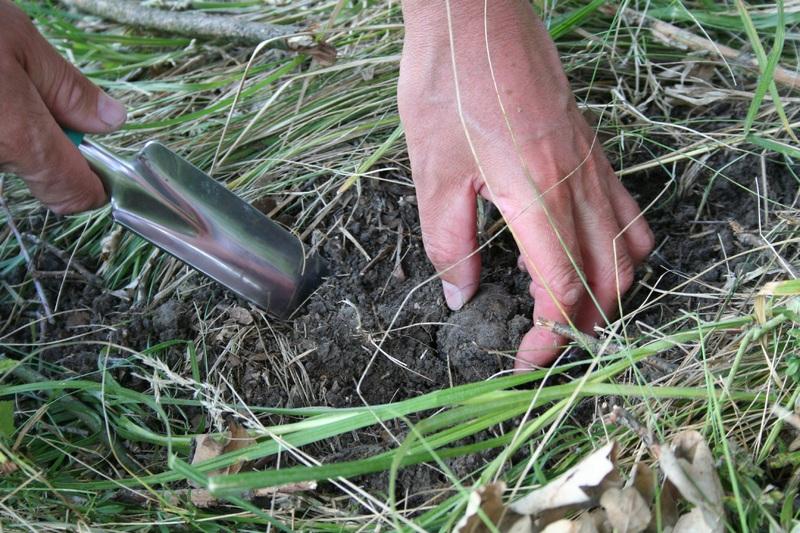
Soil pH adjustment is necessary before you plant a clover lawn.
If you are planning to grow a clover lawn, make sure the pH of your soil is between 6 and 7. Even though some clover types can grow in soil with a pH of up to 8.5, most types of clover cannot thrive outside this narrow range of pH.
You can buy a soil pH testing kit from your local market or order it online to test your soil pH. They are inexpensive and range in price from $10 to $30 and beyond. We suggest that you buy the Luster Leaf Biologic Soil pH Tester from Amazon.
If the pH of your soil is too high, you can fix it by adding compost or sawdust to your lawn soil.
Some people also recommend using sulfur to treat alkaline soil, but using natural methods is eco-friendly, and they also increase the fertility of your lawn.
On the other hand, if the pH of your soil is too low, you can fix it by adding lime to your lawn. However, keep in mind that adjusting soil pH can take quite a time.
So, it is best to test the pH of your soil a few months ahead before you plan on planting a clover lawn.
RELATED: Planting, Mowing And Watering Bermuda Grass Lawn | How To Do It Right?
Remove Unwanted Vegetation
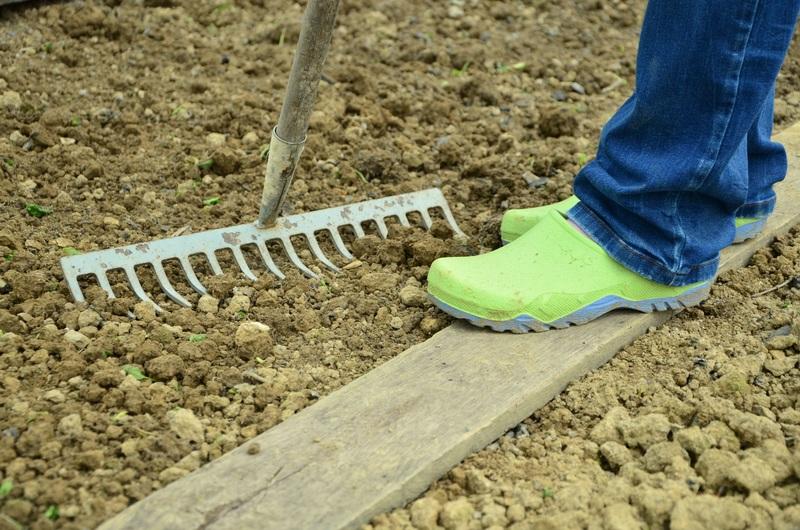
Clover lawn will establish faster on bare soil.
When you are planting a new clover lawn or replacing an existing grass lawn with clover, it is vital to eliminate all the unwanted plant growth from your yard.
The clover will grow and spread much faster if there is no competition from weeds and other vegetation.
To get rid of existing grass or other plants from your yard, you can use a non-specific herbicide or kill vegetation using natural methods. However, it is essential to understand that the effect of herbicides lasts for two or three weeks after treatment.
So, make sure that you treat your yard with a herbicide at least two or three weeks before planting the clover seeds in your yard. Otherwise, the herbicide in your yard can prevent the clover seeds from germinating.
Prepare The Soil
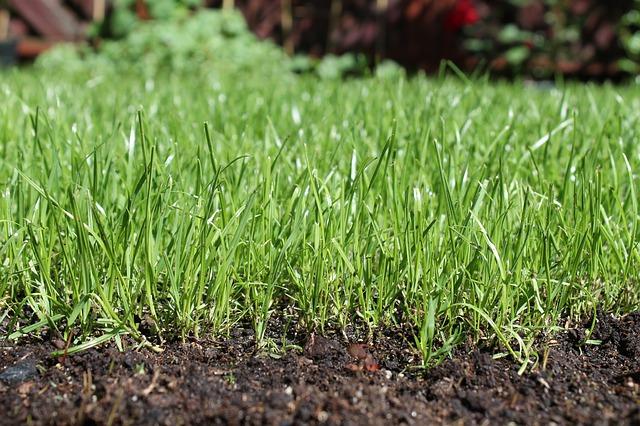
Dutch white clover does not thrive well in sandy soils.
Once you have removed all the unwanted and unnecessary vegetation from your yard, the next step is to prepare the soil for Dutch clover seeds. Dutch white clover grows best in moist, cool and well-drained conditions.
Another thing to remember is that Dutch white clover does not do well in sandy soils. It prefers clay soil, so you will get a much better Dutch white clover lawn if you add a bit of clay to your lawn. To keep the soil, you will have to water it regularly.
One side effect of watering your lawn regularly is that it might allow the weeds to grow in your yard. So, if you see any weeds, immediately remove them with a small shovel or a spade and keep watering your lawn.
Plant The Seeds
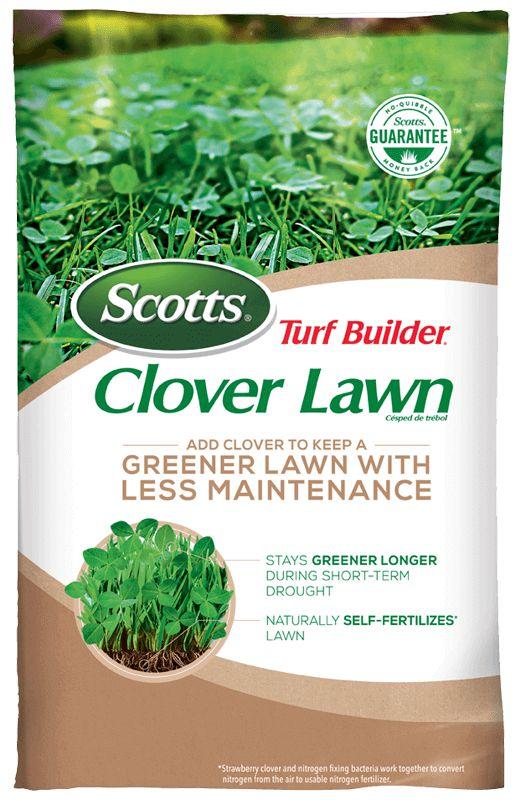
Scotts Turf Builder Clover Lawn
If you have ever seen clover seeds before, you must know they are very tiny and lightweight. It is very challenging to spread lightweight seeds evenly all across the yard.
So, we suggest that you mix the clover seeds with sand, sawdust or unfertilized soil, which will allow you to spread the clover seed uniformly across your lawn.
You can easily calculate how much seed you need by measuring the square footage of your yard. Many online tools can help you measure the area of your yard and save you from under- or over-ordering products for your lawn.
Nonetheless, about one pound of clover seeds is enough for 1,000 square feet of the ground.
You can use a spreader to distribute clover seed in your yard evenly. Once done, use a garden rake with its tie facing upward to work the clover seeds into the soil.
However, make sure that clover seeds are only covered with a thin layer of soil and not buried deep. A depth of about one-quarter of an inch is more than enough.
Many companies sell clover seeds at reasonable prices, but our favorite is Scotts Turf Builder Clover Lawn which you can buy on their website.
Water The Seeds

Dutch clover grows best in moist and well-drained soils.
Once you have planted the seeds into the ground, immediately watering them will allow them to stick to the soil.
It will also increase seed-to-soil contact, necessary for proper seed germination. Usually, we suggest that you use a starter fertilizer when planting new grass. However, you can skip it with clover seeds.
It is because clover plants can naturally produce fertilizer on their own. They are leguminous plants that can fix atmospheric nitrogen into the soil. However, we suggest that you still get your soil tested to ensure it does not lack too many nutrients.
RELATED: Overseeding A Lawn With Weeds: A Simple And Easy Guide
Discourage Foot Traffic
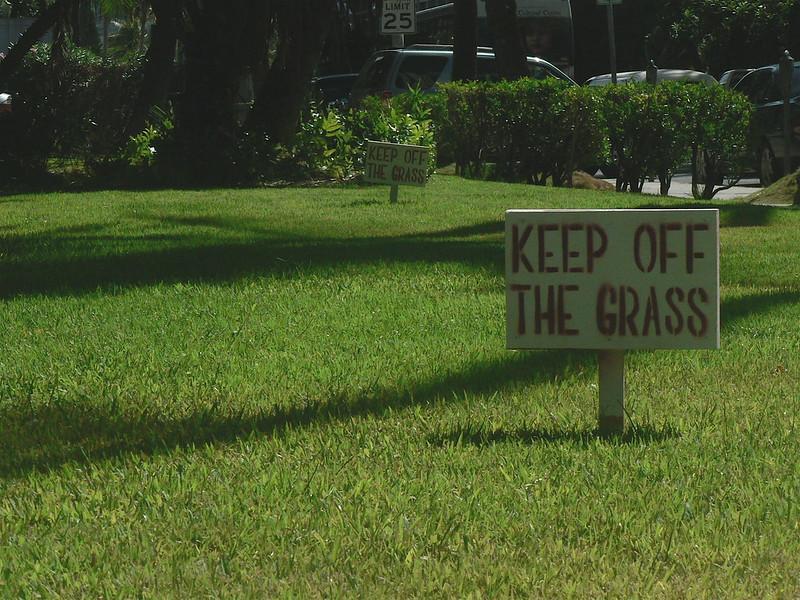
High foot traffic can prevent proper clover growth.
After planting clover seeds into the ground, you will need to ensure minimal activity in your yard for at least four weeks. Keep your pets and children away from your lawn, or seed germination could take a hit.
However, once four weeks have passed, you can resume your normal activities in your yard. By this time, clover plants will be mature enough to withstand heavy foot traffic.
Mow Occasionally
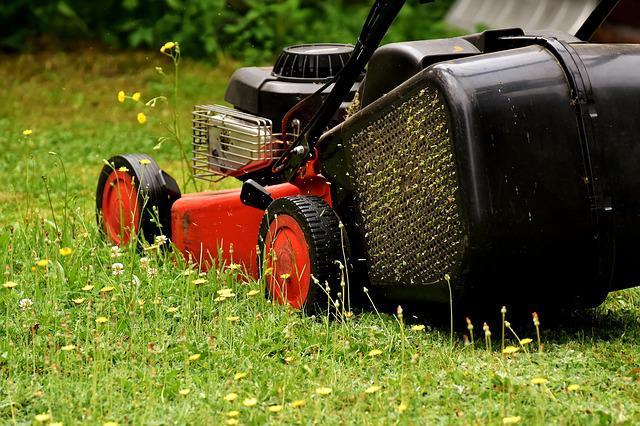
A clover lawn does not require frequent mowing.
Dutch white clover is a low-growing plant, and it does not require frequent mowing. However, its flowers attract a lot of pollinators, especially bumblebees and honeybees.
So, if you want to prevent these insects from hanging on your lawn, you will need to mow your clover lawn once a month to keep things in order.
Also, when you mow your clover field, we suggest that you leave the clipping behind. These clippings will disintegrate rapidly and act as a natural fertilizer for your yard.
Overseeding Dutch White Clover Lawn
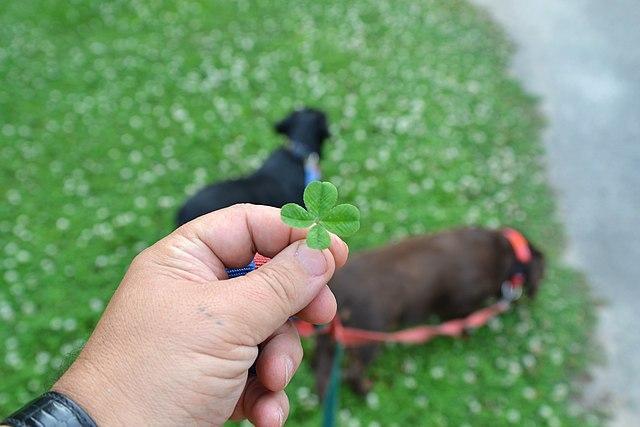
Do not use broadleaf herbicides on clover lawns.
Overseeding a lawn with clover is the same as overseeding a grass with new grass seed or sod. While creating a Dutch white clover lawn, most people prefer to overseed their existing grass lawns with clover plants. Here is how you can do it:
- Mow your grass as short as possible to make space for clover to grow.
- Use one pound of clover seeds per 500 sq. ft. instead of one pound for 10,000 sq. ft.
- Aerate your lawn to allow air, water and nutrients to reach deeper in the soil.
- If you are overseeding a large area, use a broadcast spreader.
- After seeding, water the soil every other day for the best results.
- Dutch white clover germinates in existing lawns in around seven to ten days.
- Cut back on nitrogen fertilizers and use fertilizers with potassium and phosphorus.
Another thing to keep in mind while planting clover on your existing or new lawn is to not use broadleaf herbicides before or after the seeding. Broadleaf herbicides can kill the clover plants and prevent clover seeds from germinating.
Other Clover Types For Lawns
Other than Dutch white clover, people also use various other types of clovers to create lawns. Dutch white clover is an intermediate-sized clover; if you want, you can choose to plant a larger white clover or a smaller micro-cover in your yard.
The larger white clover is known for its extraordinary forage value and nitrogen-fixing capabilities. In contrast, the micro-clover blends seamlessly with grass lawns. Sometimes people also add red clover to their lawns as well.
Red clover is a larger and bushier clover type. It can range from eight to twenty-four inches when mature and produce colorful flowers, giving the lawn a meadowy appearance. However, it is less hardy in winter and has a shorter life span.
Benefits Of Clover Lawns
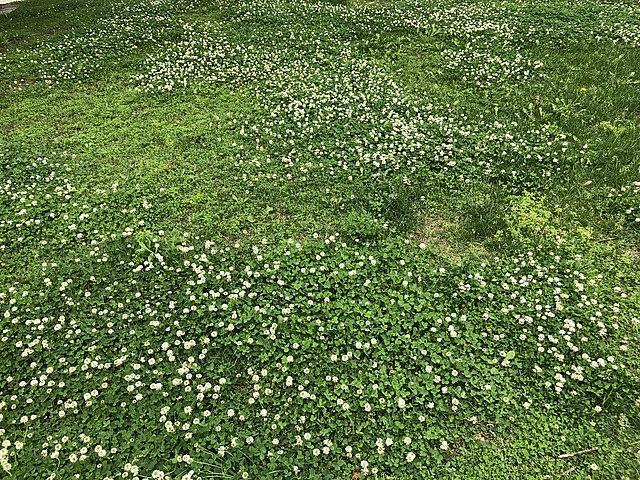
Clover lawns stay greener longer than grass lawns.
In addition to being very easy to establish, Dutch white clover lawns offer several benefits that are described below:
Drought Resistant
Once established, clover lawns need significantly less water than grass lawns, making them an excellent choice for eco-friendly lawn owners.
Erosion Control
Dutch white clover makes a robust network of dense and interconnected roots that keeps the soil in place, thus preventing soil erosion due to water runoff.
Nitrogen Fixation
Since Dutch white clover belongs to the legume family, they can fix nitrogen from the atmosphere into the soil, thus increasing soil fertility.
Low Maintenance
Dutch white grass has little to no fertilizer requirements. It won’t need herbicide treatments as often, and it can hold itself pretty well among common lawn weeds.
Inexpensive
One pound of Dutch white clover seeds only costs around $1, and they are enough to cover a 1,000 sq. ft. So, if your lawn is 5,000 sq. ft., you can seed it all for just $5.
Stays Green Longer
Depending on your location, a Dutch white clover lawn will remain green all year or most of the year. It only loses color for a brief time in the cold winter months.
Reduces Soil Compaction
Since Dutch white clover makes a dense, interconnected system of roots, it naturally breaks up compacted soil. So, you won’t have to aerate your lawn as often.
Little Or No Mowing Required
A clover lawn has fewer aeration needs, and it also does not need to be mowed as often as a grass lawn. It has a low lying habit and grows only 4 to 8 inches in height.
Attracts Pollinators
Unlike a grass lawn which attracts no pollinators and has minimal natural benefits, Dutch white clover attracts numerous pollinators, including honey bees.
Acts As Living Mulch
Dutch white clover acts as a living mulch by providing nutrients to other plants by fixing atmospheric nitrogen, discouraging weed infestations, and reducing soil erosion.
Disadvantages Of A Clover Lawn
Even though a Dutch white clover lawn is easy to establish, low maintenance and inexpensive, it is not all roses and rainbows. There are many disadvantages to having a Dutch white clover lawn which are described below. Make sure you read them before making your final decision about clover lawn:
Attracts Bees
If you are afraid of bees and bee stings, you might not want to plant a clover lawn. Its pretty white flowers attract many pollinators, including honey bees and bumblebees.
Less Tidy
If you are used to a grassy lawn, you might not like the look of a Dutch white clover turf. It has broad leaves and hanging stems which make it look less tidy.
Can’t Handle Heavy Traffic
Although Dutch white clover can handle traffic better than other clover varieties, it is nowhere near a grass lawn which might be a deal-breaker for some people.
Conclusion | Dutch White Clover Lawn
Depending on your needs, a Dutch clover lawn might be a perfect choice or a deal-breaker for you. If you want an eco-friendly, less-maintenance and green lawn all year long, you cannot go wrong with a Dutch clover lawn.
However, if your requirements are a lawn that can withstand heavy foot traffic and look all tidied up no matter what the season, a clover lawn is not for you!
Frequently Asked Questions
What is the difference between white clover and white dutch clover?
Dutch white clover is an intermediate-sized white clover, larger than the small ladino clover but smaller than the larger white clover. However, Dutch white clover is very common, and most people use these terms interchangeably.
What kind of clover is best for lawns?
White clover! It is hardy, low-growing, and stays green through most of the year.
How deep do dutch clover roots go?
Dutch white clover makes an extensive, dense and interconnected system of roots. Its roots can go as deep as 5 to 8 feet.
Sources for Further Reading
White Dutch Clover – Purdue University Agronomy Extension
White Clover Establishment and Management Guide – University of Georgia Extension
White Clover – Utah State University Extension
Editor’s Recommendations
A Complete Guide To Top Dressing A Lawn: Benefits & How To Do It Correctly!
How and When To Use Ironite In A Lawn For Best Results?
How Much Does Sod Weigh? Transporting & Taking Care Of Your Sod







